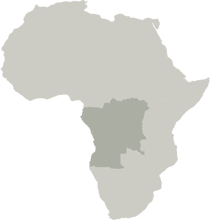 |
|||
|
|||||||||||||||
|
|
|
|
|
|
|
|
|
Gussman's visits to Gabon and his involvement with the peoples and cultures there inspired him to begin collecting African art. He initially acquired examples of art from throughout sub-Saharan Africa, but he soon specialized in the arts of central Africa, a region to which he personally related because of his work at the Schweitzer hospital. Gussman maintains that his primary motivation in choosing these works was aesthetic: he was simply attracted to beautiful objects.  He also recognizes the critical impact of his experiences in central Africa not only in terms of developing his interest in African art but also in making him aware of new ways of seeing. Over many decades he developed an extraordinary collection of African art, one notable for its strong regional focus as well as for the way it represents the breadth and diversity of African artistic creativity. He also recognizes the critical impact of his experiences in central Africa not only in terms of developing his interest in African art but also in making him aware of new ways of seeing. Over many decades he developed an extraordinary collection of African art, one notable for its strong regional focus as well as for the way it represents the breadth and diversity of African artistic creativity.
These 75 highlights from the Gussman collection probably date from the late 19th to early 20th century and come from more than 30 different African cultures that span the present-day nations of Cameroon, Gabon, Equatorial Guinea, the Republic of the Congo, the Democratic Republic of the Congo, Angola, and Zambia. Many of the objects exemplify the free exchange of ideas, beliefs, and artistic practices that occurs across ethnic boundaries in central Africa and has resulted in distinctive art forms. Viewed together, these works highlight the dynamic nature of cultural exchange while they present the personal expressions of African artists. |
|
|
Pictured above Lawrence Gussman with Albert Schweitzer in Lambaréné, Gabon
Reliquary Guardian Figures | Masks of Gabon and the Congo | Status and Power | Divination and Spiritual Power | Figurative Sculpture | Beneath the Surface Public Programs | Credits and Catalogue | Press Release | |